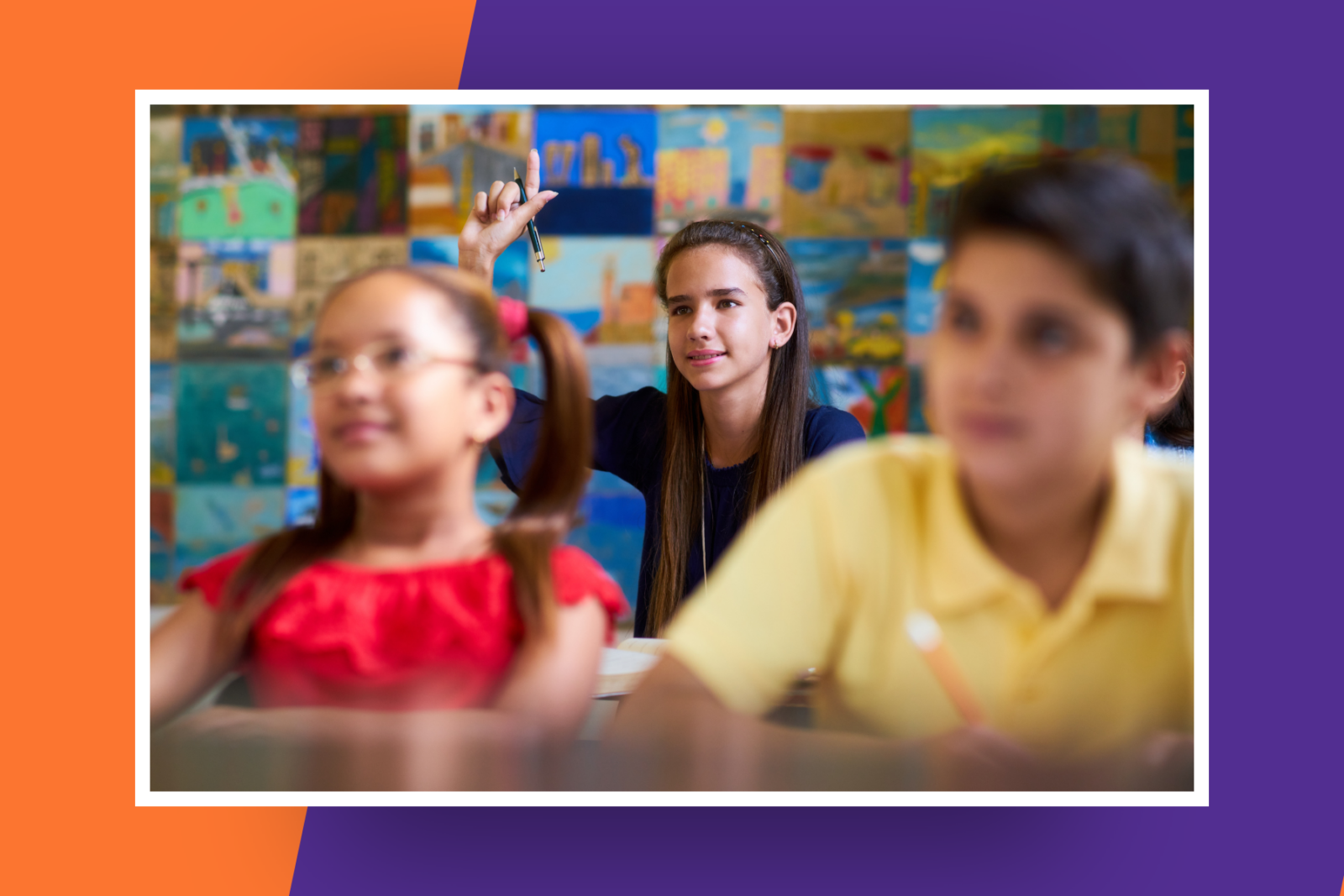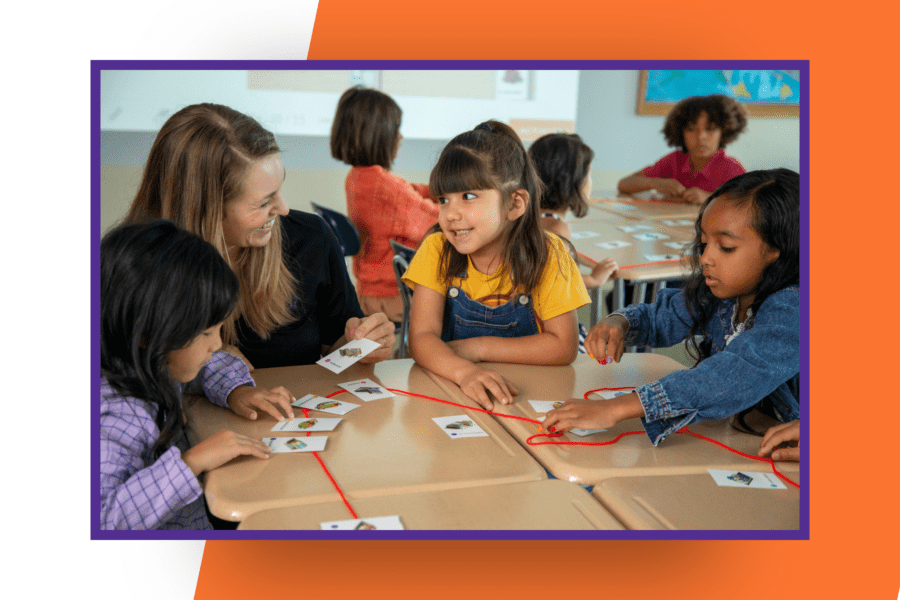
Reading comprehension is more than just learning how to decode words—it’s about understanding the world around us. Yet, many elementary classrooms dedicate minimal time to science instruction, missing a key opportunity to build background knowledge that strengthens literacy skills. Research shows that students who engage in structured science learning develop stronger vocabulary, analytical thinking, and reading comprehension. By incorporating science into literacy instruction, educators can create a more engaging, knowledge-rich classroom experience that benefits all learners.
This post explores how science supports literacy development, backed by the latest research, and provides actionable strategies for integrating science instruction into reading and writing activities. If you want to dive deeper, download our free eBook, Rethinking Literacy in K-5 Classrooms: How Social Studies and Science Drive Academic Success.
How Science Improves Reading Comprehension and Critical Thinking
The connection between science instruction and literacy development is undeniable. Scientific exploration encourages students to ask questions, analyze information, and make evidence-based conclusions—all of which are essential literacy skills. When students engage with scientific concepts, they build critical background knowledge that enhances their ability to comprehend complex texts.
A February 2024 study published in Developmental Psychology provides strong causal evidence that building scientific background knowledge translates into higher reading achievement, particularly for low-income students. The research, conducted in a large urban school district, found that 40 percent of students from low-income families demonstrated significant improvements in reading comprehension when science instruction was integrated with literacy instruction.
The Power of Science Texts in Expanding Vocabulary and Analytical Skills
When students engage with scientific texts, they practice critical literacy skills such as analyzing informational content, identifying key details, and synthesizing information. Unlike fiction, science texts require students to interpret data, follow logical reasoning and understand cause-and-effect relationships—skills that improve comprehension across all subject areas.
A significant body of research confirms that structured exposure to scientific content enhances literacy. Students who regularly engage with science-related texts develop a broader vocabulary, particularly in academic and technical language. Scientific reading also strengthens students’ ability to decode complex sentence structures, improving their capacity to read and understand nonfiction texts.
Reading about scientific discoveries and conducting experiments fosters an inquiry-driven mindset. When students ask questions, form hypotheses, and evaluate evidence, they develop analytical skills essential for deep reading comprehension. Literacy expert Timothy Shanahan emphasizes the significance of these findings: “The study makes it very clear that it is possible to combine reading with social studies and science curriculum in powerful ways that can improve both literacy and content knowledge.” Find out how schools can effectively integrate social studies and science into literacy instruction.
How Inquiry-Based Learning Strengthens Literacy Development
Inquiry-based learning, a student-centered approach that encourages exploration and questioning, is a cornerstone of both science instruction and effective literacy development. This method builds comprehension skills by having students actively engage with texts, conduct research, and draw conclusions based on evidence.
Several elements of inquiry-based learning support literacy:
- Encourages Questioning: Asking questions about scientific phenomena mirrors the process of critically engaging with texts in reading.
- Develops Argumentation Skills: Writing about scientific findings requires students to explain reasoning, use evidence, and make persuasive arguments—skills critical for strong literacy performance.
- Promotes Vocabulary Growth: Exposure to scientific language builds domain-specific vocabulary, which improves comprehension of nonfiction texts.
- Enhances Problem-Solving: Evaluating scientific data strengthens inference-making, which is crucial for understanding complex reading materials.
By integrating inquiry-based learning strategies into literacy instruction, educators can provide students with opportunities to develop reasoning and critical thinking abilities that extend beyond the science classroom. Learn how other content-rich subjects, like social studies, build critical background knowledge for literacy success.
Strategies to Integrate Science and Literacy Instruction
Educators can support literacy development by embedding science instruction into reading and writing activities. Here are some effective strategies:
- Reading Scientific Texts: Encourage students to read nonfiction science books, articles, and research reports to develop comprehension and analytical skills. Pairing scientific readings with guided discussions helps students practice extracting key information and making connections between ideas.
- Writing About Science: Assign students to write lab reports, research papers, and science summaries to strengthen their literacy skills. Writing in science requires clarity, logical structure, and supporting claims with evidence—abilities that directly enhance reading proficiency.
- Hands-On Experiments with Written Reflection: Conducting science experiments provides students with real-world applications of scientific principles. When students document their observations, describe processes, and explain results, they practice organizing their thoughts and using precise vocabulary.
- Cross-Disciplinary Lessons: Integrate science topics into literacy instruction by having students write persuasive essays on environmental issues, conduct research projects on space exploration, or create informational brochures about ecosystems.
- Student-Led Research and Presentation: Encourage students to explore a scientific topic of interest and present their findings through a written report and oral presentation. This practice builds confidence in using academic language, structuring information, and engaging an audience—all crucial literacy skills.
Why Schools Should Prioritize Science for Literacy Gains
The evidence is clear: science education is an untapped resource for literacy improvement. Schools that prioritize science instruction within the literacy block provide students with opportunities to expand their vocabulary, enhance reading comprehension, and develop problem-solving abilities.
By rethinking literacy instruction to include meaningful, content-rich science experiences, educators can equip students with the skills they need for academic success across disciplines. The goal is not to replace traditional ELA instruction but to complement it with scientifically informed literacy practices that make reading more engaging, relevant, and impactful.
This post is part of a four-part blog series—see the other parts here:
- The Missing Piece in Literacy Instruction: Why Social Studies and Science Matter
- Boost Reading Skills with Social Studies: The Key to Stronger Literacy
- Making Time for Social Studies and Science Without Sacrificing Literacy
Want to learn more? Download TCI’s free eBook, Rethinking Literacy in K-5 Classrooms: How Social Studies and Science Drive Academic Success, to discover research-based strategies and real-world examples tailored to your district’s needs.


